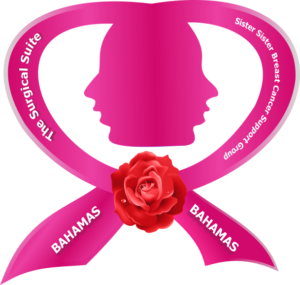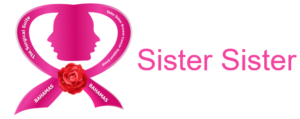ABOUT US
About Us
The brain child of Dr. Locksley Munroe and Dr. Charles Diggiss, the Sister Sister Breast Cancer Support Group was launched in September 2000 as a non-profit charitable group for women diagnosed with Breast Cancer. Nurse Charlene McPhee, ably assisted by office staff members Francis Smith, Margaret Thurston and Cheryl Ingraham underpinned the fledgling group until it took its own flight. In October 2006 , the Freeport Chapter of Sister Sister was chartered under the leadership of Pastor C. Ann Grant of Agape House Ministries.

In addition to assisting with the mental and spiritual needs of the membership, financial assistance is also offered to those in need thru the purchase of the Port-a Cath. This medical device is used by the Oncologist to administer chemothera-phy and is seen as the first step in helping women fight Breast Cancer. Monetary donations are also made to assist members with the cost of medication, medical exams, and some day to day necessities. Each newly diagnosed patient receives a gift bag containing information on patient care, a squeeze ball for exercising, information on prosthesis and the contact infor-mation of members of the group.
A variety of events are organized to assist with the raising funds. In September 2004 Sister Brenda Russell (deceased) organized the groups first Prayer Breakfast with British American joining in as the major partner and sponsor. The Prayer Breakfast remains the major fundraiser for the group and is held annually in September. Vision Statement
A Symbol Of Hope
Globally the Breast Cancer symbol is the “Pink Ribbon” which for many is the symbol of joy and hope. In 2006 a young Graphic Artist Antonio Saunders designed the Group’s logo – the face of two sisters surrounded by the universal symbol of the pink ribbon tied in the center with an open rose. These symbols together express ”hope and faith”. Pins are available for sale.
Monetary donations are also made to assist members with the cost of medication, medical exams, and some day to day necessities. Each newly diagnosed patient receives a gift bag containing information on patient care, a squeeze ball for exercising, information on prosthesis and the contact information of members of the group.

What we do?
To empower and educate women to actively participate in preventative Health Practices, increase survival rates and improve the quality of life of those diagnosed with Breast cancer and to enhance the Public awareness about this disease.
To provide supportative care, encouragement , coping skills, resources, strength and hope for women who have or have had cancer. This dynamic attachment by women for others will promote health, wholeness and healing.
Breast cancer treatment often starts with surgery to remove the cancer. Most people with breast cancer will have other treatments after surgery, such as radiation, chemotherapy and hormone therapy. Some people may have chemotherapy or hormone therapy before surgery.
Breast self-exam, or regularly examining your breasts on your own, can be an important way to find breast cancer early, when it’s more likely to be treated successfully. Although no single test can detect all breast cancers early, many people report that performing a breast self-exam in combination with other screening methods can increase the odds of early detection.
Step 1: Examine Your Breasts in a Mirror With Hands on Hips
Step 2: Raise your arms and Examine your breasts.
Step 3: Look for Signs of Breast Fluid
Step 4: Feel for Breast Lumps While Lying Down
Step 5: Feel Your Breasts for Lumps While Standing or Sitting
Don’t panic if you think you feel a lump in your breast. Most women have some lumps or lumpy areas in their breasts all the time, and most breast lumps turn out to be benign (not cancer). There are a number of possible causes of non-cancerous breast lumps, including normal hormonal changes, a benign breast condition, or an injury. Don’t hesitate to call your doctor if you’ve noticed a lump or other breast change that is new and worrisome. This is especially true for changes that last more than one full menstrual cycle or seem to get bigger or more prominent in some way. If you menstruate, you may want to wait until after your period to see if the lump or other breast change disappears on its own before calling your doctor. The best healthcare provider to call is the one who knows you and has done a breast exam on you before — for example, your gynecologist, your primary care doctor, or a nurse practitioner who works with your gynecologist or primary care doctor.
